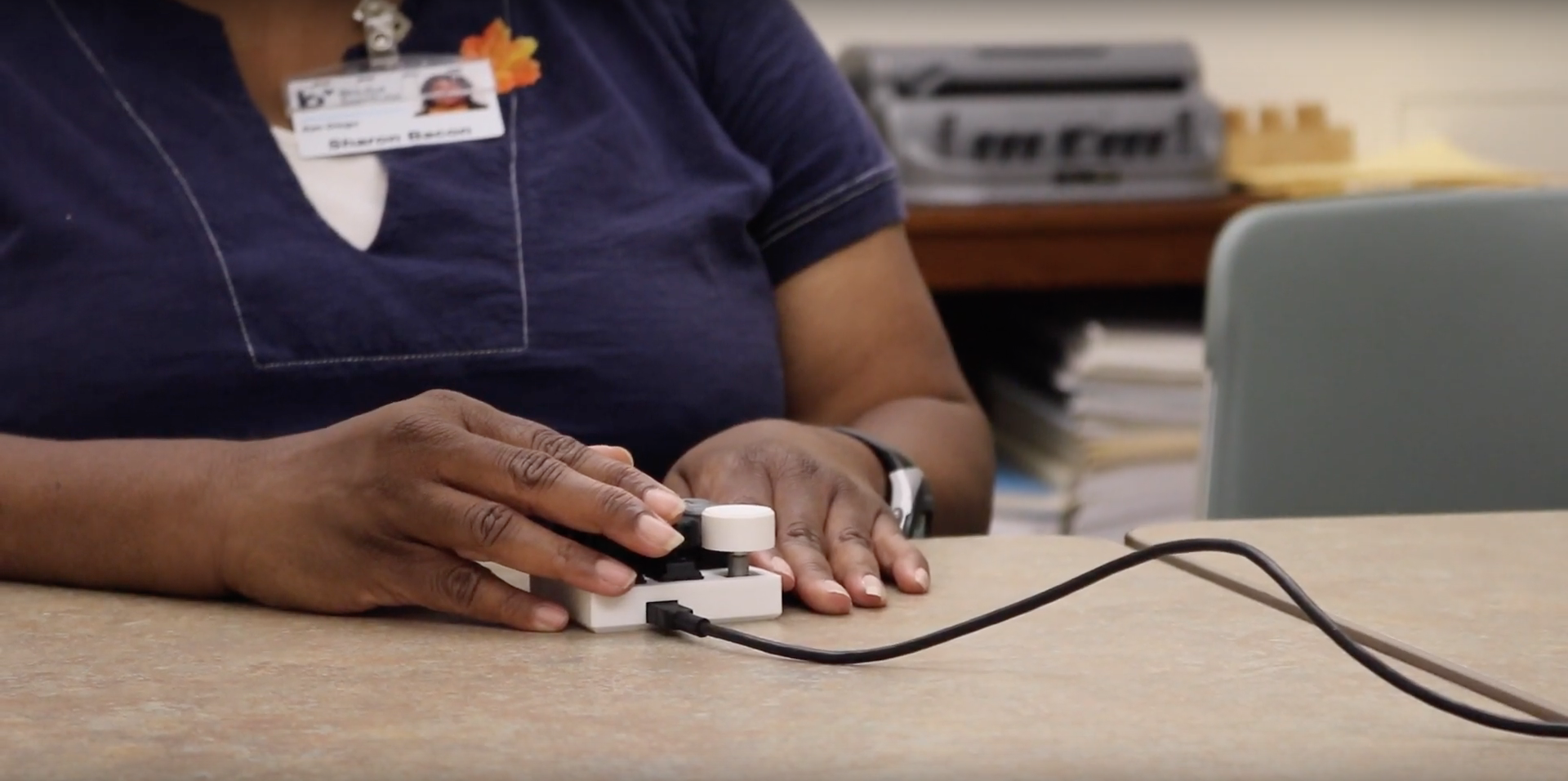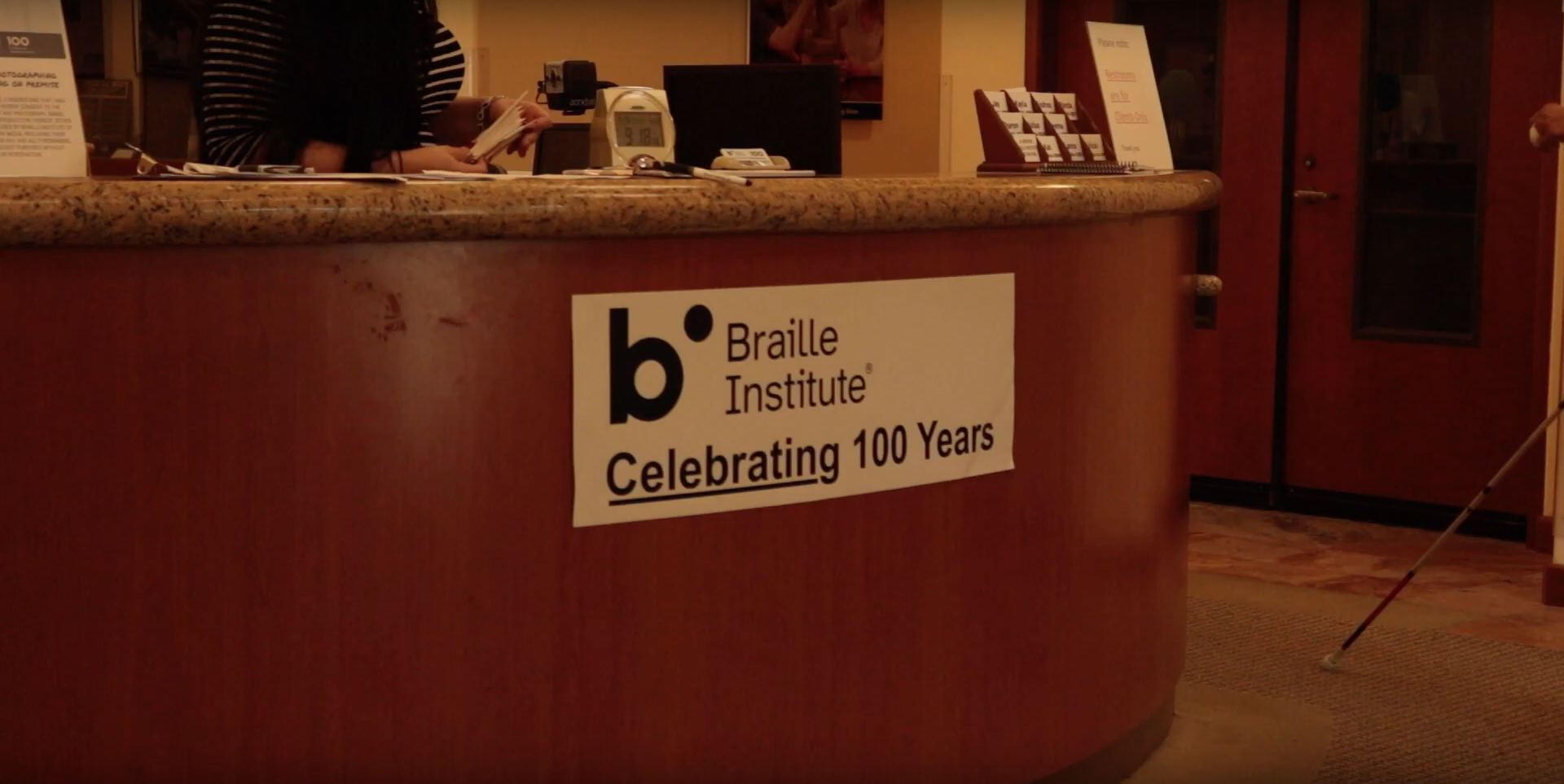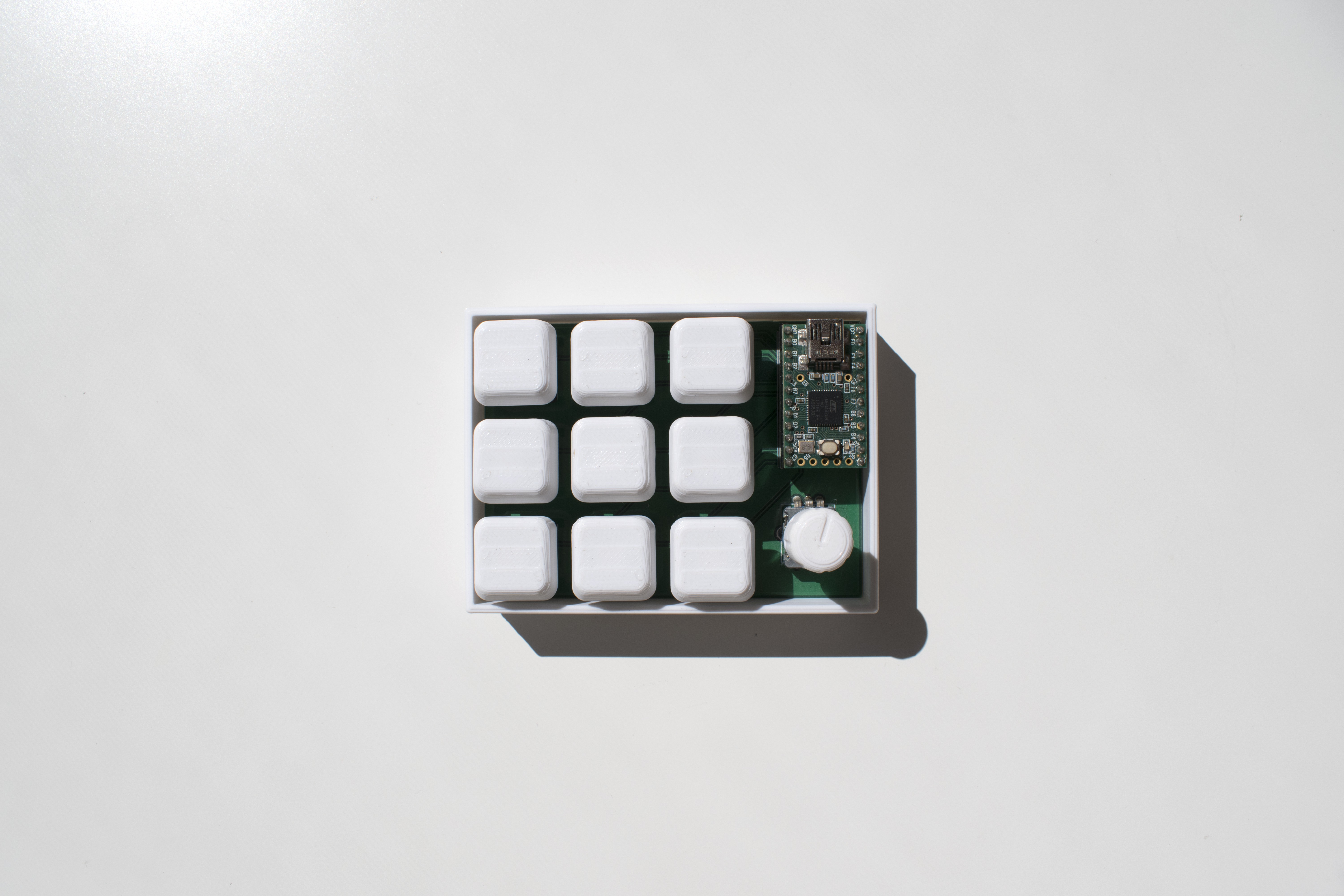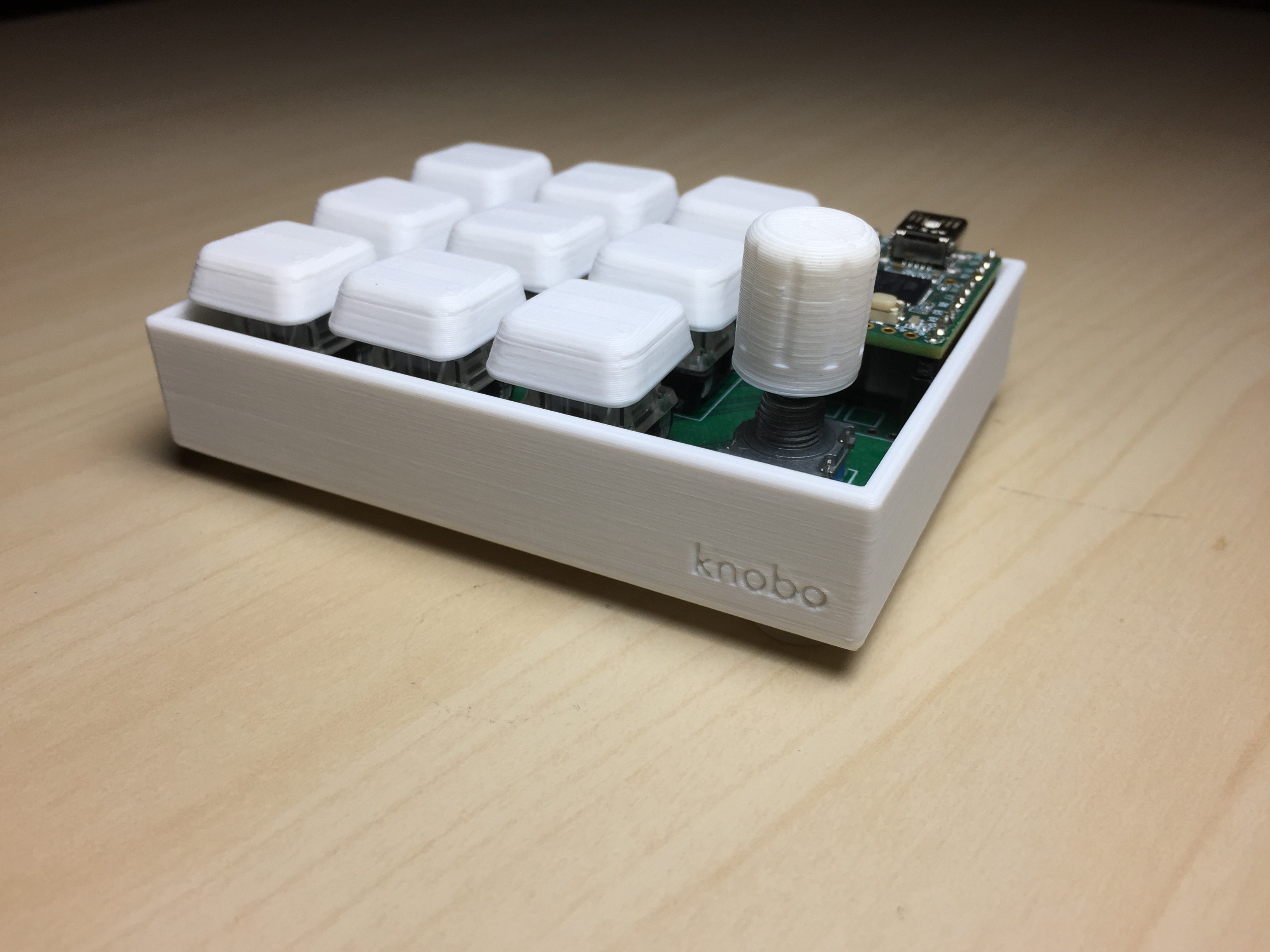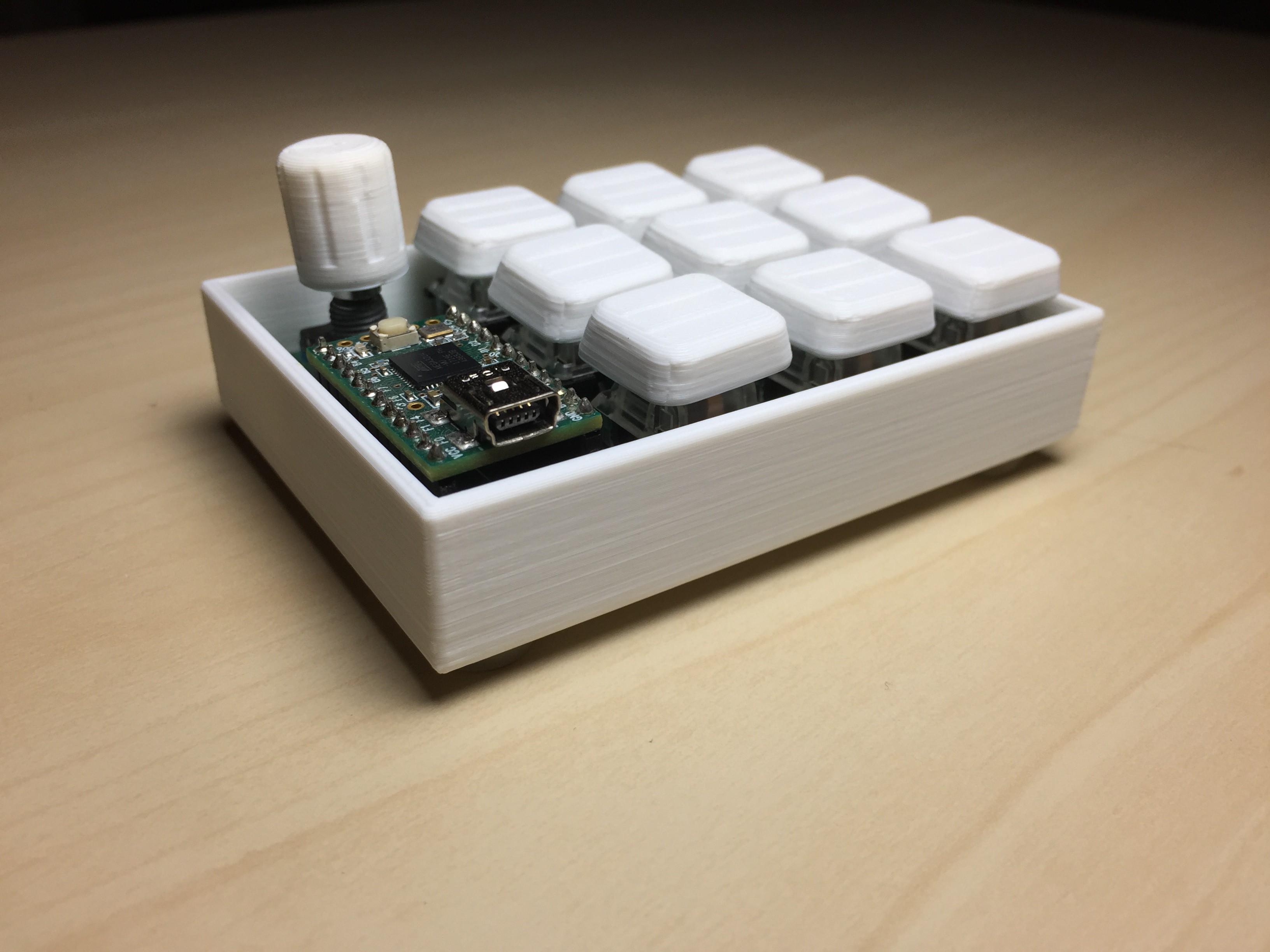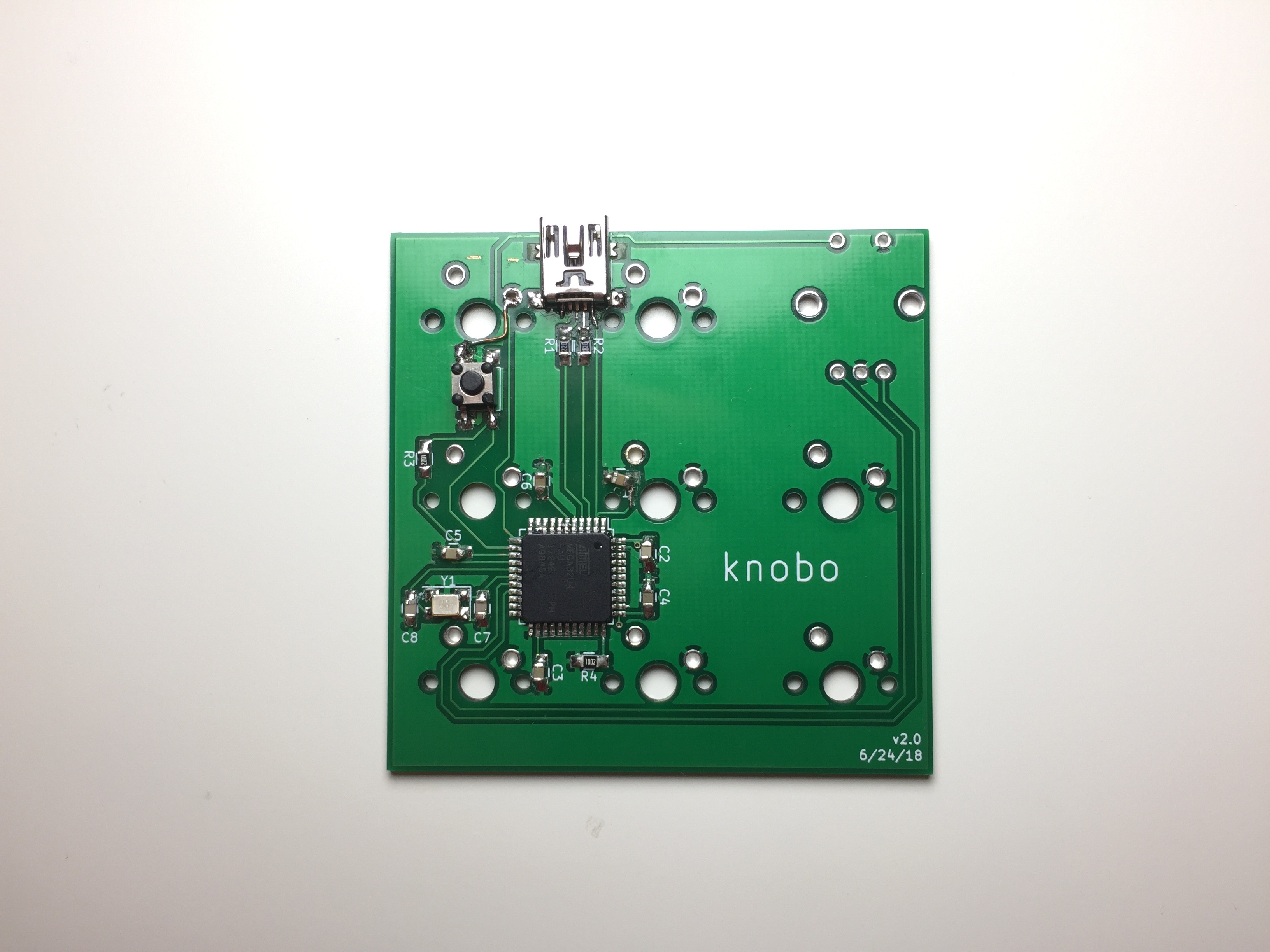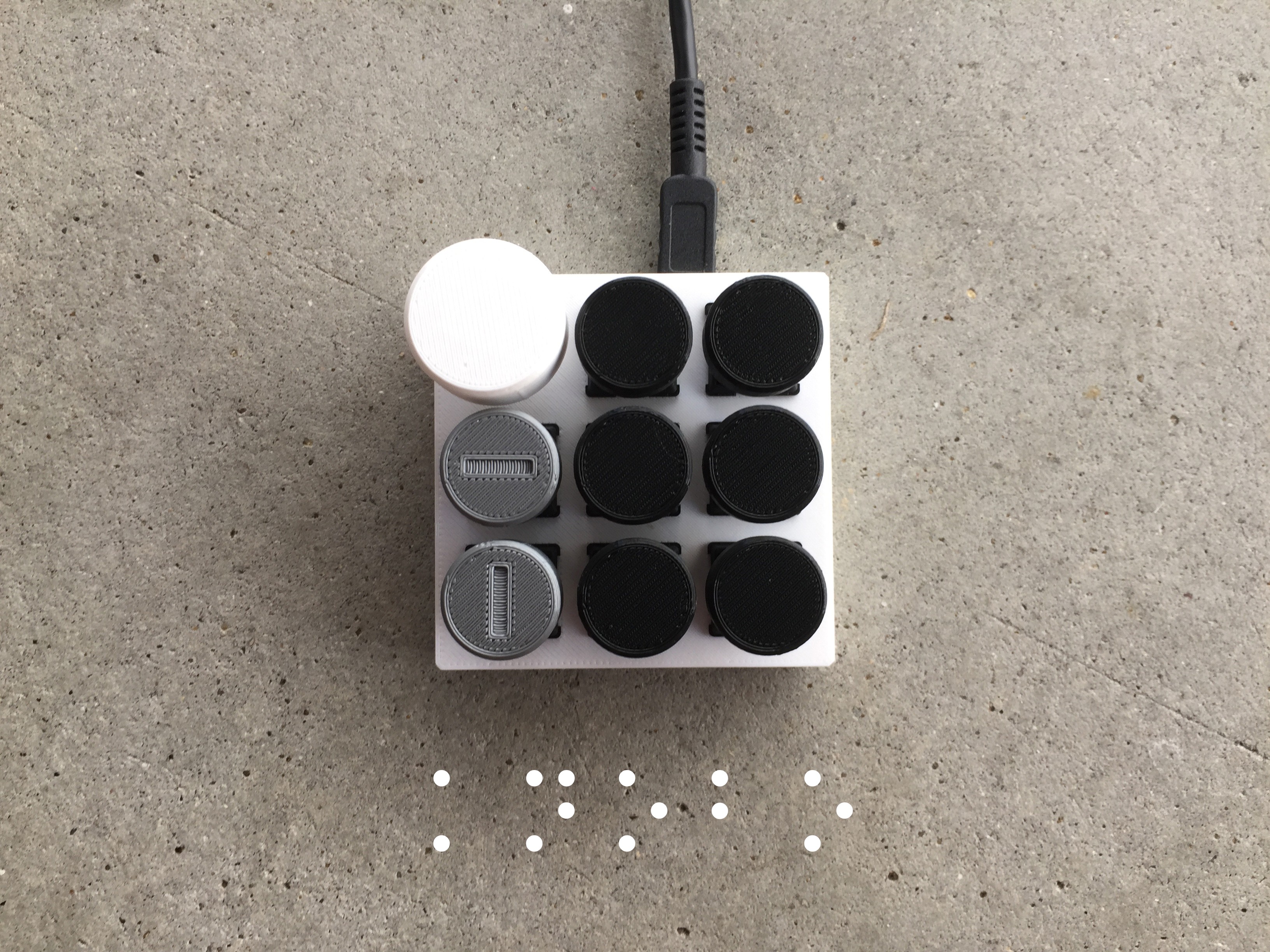-
What's Next
10/17/2019 at 23:09 • 0 commentsI envisioned Knobo as an HID (human interface device) that will take full advantage of computer speech-to-text technology to aid braille education, rather than harming it.
After over a year of development, I've successfully created an HID that is compact, easy to use, and manufacturing ready.
As you all probably know, Knobo is a finalist in the 2019 SuppleFrame Hackaday Prize. I hope that with the funds from winning the prize, I will be able to start mass producing this product to bring it to the hands of visually impaired learners around the globe.
-
Project Video
10/01/2019 at 06:48 • 0 commentsShout out to my friend Tom Stiel for helping me make this video happen.
-
Manufacturing
10/01/2019 at 06:41 • 0 commentsWhile I may be a high schooler, I'm no stranger to bringing products from prototype to production, which is proven by the two successful Kickstarter campaigns I ran for my other products.
For Knobo, the electronics will be manufactured overseas while the enclosure will be manufactured by a local 3D printing company.
Here is the estimated cost for the production of one unit:
Electrical components + 3D print material: ~$10
PCB Assembly: A $25 machine setup fee (one-time fee for any amount of PCBs) + ~$5/PCB
3D printing: ~3 hrs
Hand Soldering (for key-switches and rotary encoder) and final assembly: 5-10 min
Competitions:
There are currently no products on the market that takes advantage of computer text-to-speech technology to enable and encourage the visually impaired to learn braille independently.
However, a secondary feature of Knobo is that it acts as an alternative to the standard keyboard and traditional Braille writers. In that sense, according to the San Diego Braille Institute, Knobo is better than traditional Braille writer in that it's far more compact and lightweight, have an additional scrolling/reading knob, and above all, extremely intuitive. During my user testing at the Braille Institute, visually impaired people were able to start typing out sentences using Knobo right away, whereas they had to go through a steep learning curve before using a standard keyboard or a traditional Braille writer.
-
Feedback from the Braille Institute
09/29/2019 at 20:04 • 0 comments![]()
Here are some of the feedback we got from Sharon, a visually impaired Braille instructor at the San Diego Braille Institute.
What she likes about Knobo:
- Much more compact and portable than traditional braille writers
- Very simple and intuitive, she was able to start typing right away
- Allows Braille students to get instant feedback on whether or not their braille letter is correct when they are doing homework or the Braille instructor is absent.
Features she hopes we can implement:
- Punctuations.
- Numbers
- Capitalize letters
- Compatible with Braille embosser.
The video interview with Sharon is coming soon.
-
Visiting the Braille Institute
09/28/2019 at 16:53 • 0 comments![]()
Last week, we were able to visit the Braille Institute of San Diego to get some user feedback for this project. More info will be posted later.
-
Switching IDE
09/22/2019 at 04:46 • 0 commentsI've recently switch my IDE to Atom in combination with PlatformIO. I made the switch because how expandable and customizable Atom is.
-
Knobo is a Hackaday Prize Finalist!
09/11/2019 at 04:01 • 1 commentProud to announce that Knobo is one of the twenty finalist of the 2019 Hackaday Prize.
-
All Knobo Iterations
08/25/2019 at 10:23 • 0 commentsKnobo v1.0 (Made on 6/3/18)
![]()
My first time designing and manufacturing a PCB. It was running on a Teensy 2.0 with Teensyduino firmware.
Knobo v2.0
Knobo now uses SMT components and a Atmega32u4 microcontroller.
The PCB of Knobo v2.0 didn't work due to some design flaws :(
It was also my first time doing SMD soldering, It took me 3 tries and 3 wasted chips before I managed to solder the Atmega32u4.
Knobo v2.5
![]()
Removed one of the keys to make the whole thing more compact.
-
Keycaps Update
08/24/2019 at 06:15 • 0 comments![]()
Keycaps are now round to better represent the Braille cell, and the two "special" keys now have a grove to help the visually impaired to identify them.
-
Github Fixed
08/20/2019 at 18:55 • 0 commentsThe Github repository should now be visible
Knobo
An intuitive and compact device that helps the visually impaired learn braille.
 Gary Peng
Gary Peng